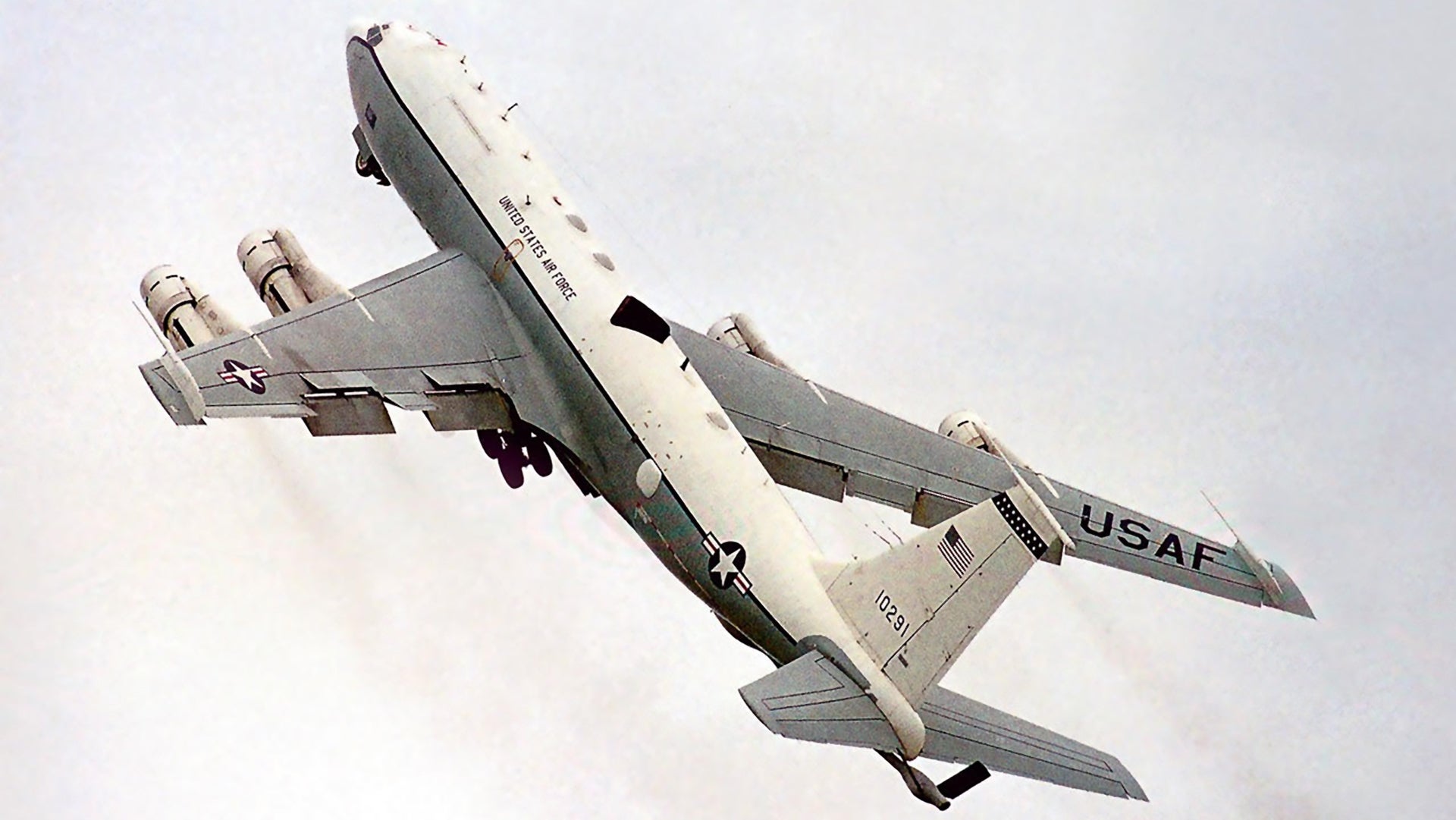For years the RAF Mildenhall Air Fête was one of the highlights of the British air show season. Its reputation for bringing unusual, exotic, and far-flung visitors made it a “must-see” event for guests and flight crews alike. The Air Force’s EC-135H SILK PURSE definitely fit the bill of unique aircraft participants.
The 10th Airborne Command and Control Squadron (ACCS), based at RAF Mildenhall from 1970 to 1991, operated five Boeing EC-135H SILK PURSE airborne command posts in support of the U.S. Commander-in-Chief, Europe (USCINCEUR), the head of U.S. European Command. These would launch in time of crisis to provide an aerial backup to ground-based command centers, and operated much like the BLUE EAGLE EC-135Js for the Pacific, the SCOPE LIGHT EC-135Ps for the Atlantic, and the EC-135Cs (including the vaunted LOOKING GLASS for Strategic Air Command) in the continental US.

Traditionally, the 10th ACCS EC-135s made rather docile appearances at the Air Fête, usually flying in formation with U.K.-based fighters to demonstrate their air refueling capability. After one such display with F-111s, an image was altered to show one of the Aardvarks as a secret “Aurora” type airplane caught by an intrepid oil rig photographer over the North Sea, causing no end of wild speculation.
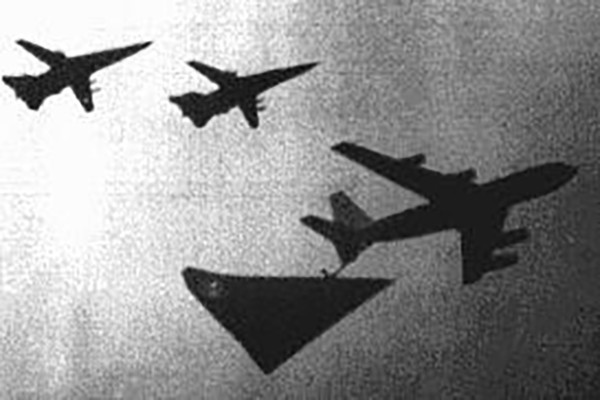
With the anticipated disbandment of the 10th ACCS in late 1991 due to the “peace dividend” associated with the end of the Cold War, coupled with the extensive corrosion of the SILK PURSE fleet due to the salty damp air both in the United Kingdom and Lajes Field, the Azores, where the EC-135Hs sat ground alert, the unit planned for its final flight at the 1991 Air Fête. The aircraft commander for the flight was Major “Mad Jack” Elliott. He had previously flown the LOOKING GLASS EC-135Cs at Offutt Air Force Base, Nebraska, the many different EC-135s at Ellsworth Air Force Base, South Dakota, and the COBRA BALL RC-135S at Eielson Air Force Base, Alaska. Elliott was on one of the flights that witnessed the “Dome of Light” while flying out of Alaska. You can read all about these mysterious phenomena in this past War Zone feature.
While stationed in Alaska, “Mad Jack” led the RC-135 Combat Tactics Team (along with the author), and took part in many spirited discussions about the performance of the TF33-equipped ‘135s. Part of this involved planning for an RC-135S takeoff in a high-threat condition, as the COBRA BALL was not equipped with the HAVE SIREN counter infrared system found on the RIVET JOINT RC-135V/W and COMBAT SENT RC-135U fleets. This meant an aggressive takeoff and climb would be used to reduce vulnerability to shoulder-fired surface-to-air missiles, such as the SA-7. In truth, there was little need for this at Eielson AFB, and zero need at the COBRA BALL’s forward operating location at Shemya AFB in the Aleutian Islands.
Beginning in 1988, the RC-135S deployed to Kadena Air Base, Okinawa, with anticipated movements to other locations that were less secure than Alaska. As a result, these “hangar flying” debates were far more significant than mere “what if” exercises, and the general consensus was to climb at 3-engine speed plus 50 Knots-Indicated Air Speed (KIAS), irrespective of nose-up angle.
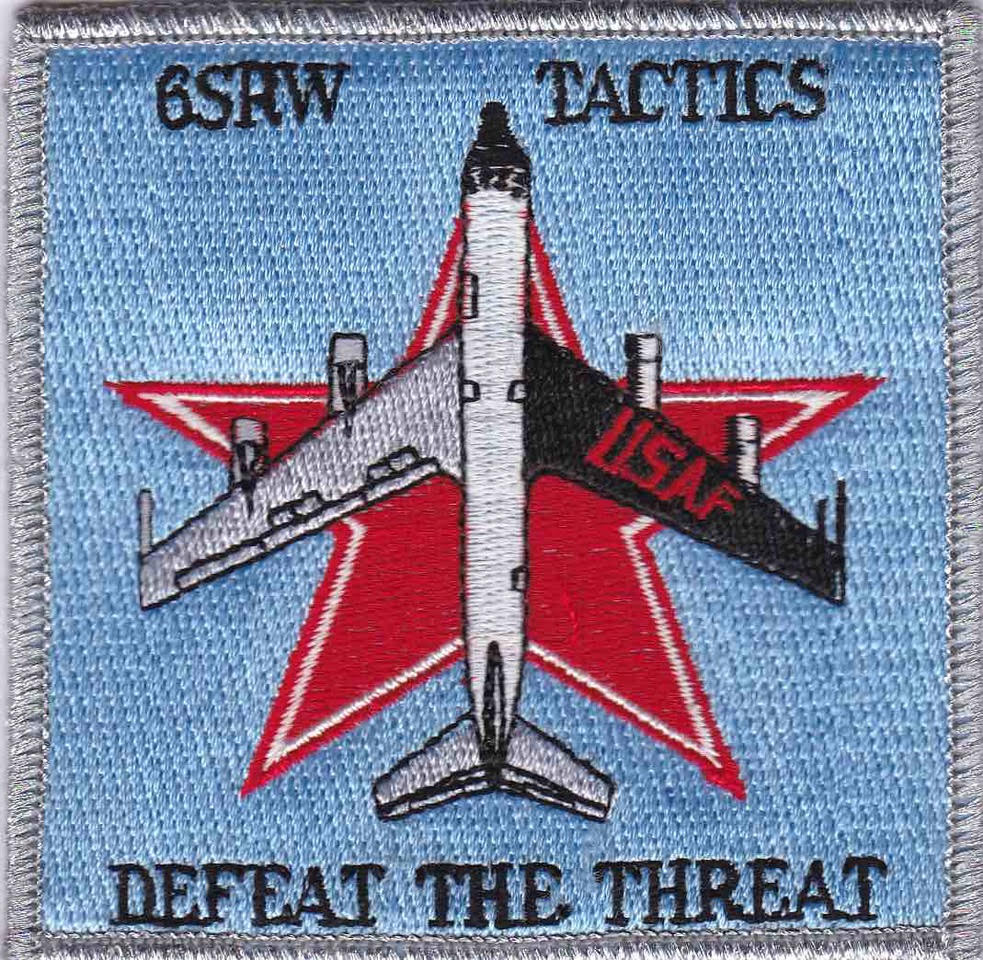
When the KC-135A first became operational, its low-thrust J57 engines barely provided sufficient thrust, even with water injection (thrust was 11,200 pounds ‘dry,’ 12,925 pounds ‘wet’), during its maximum fuel load takeoff for nuclear war. Consequently, the pitch picture at takeoff was a mere 8.5 or 9 degrees nose up, allowing the airplane to accelerate while providing a very minimal margin of error. With TF33 turbofans, thrust increased to 16,050 pounds (and 20,000 pounds for the F108 high-bypass turbofans on the KC-135R/T). For decades, SAC operating procedures were clear: follow the 8.5 or 9 degree climb profiles or die.
On 16th November 1988, KC-135R 62-3554 Cherokee Rose set 16 time-to-climb records up to just under 50,000 feet. Its F108 engines were fully uprated to 24,000 pounds of thrust. The airplane was airborne in an amazing five seconds, accelerated to 325 KIAS, then raised the nose to 27 degrees and maintained 0.78 Mach until reaching the desired altitude. Clearly, in the right conditions, the KC-135 was capable of more than its stodgy 8.5 or 9 degree rotation.
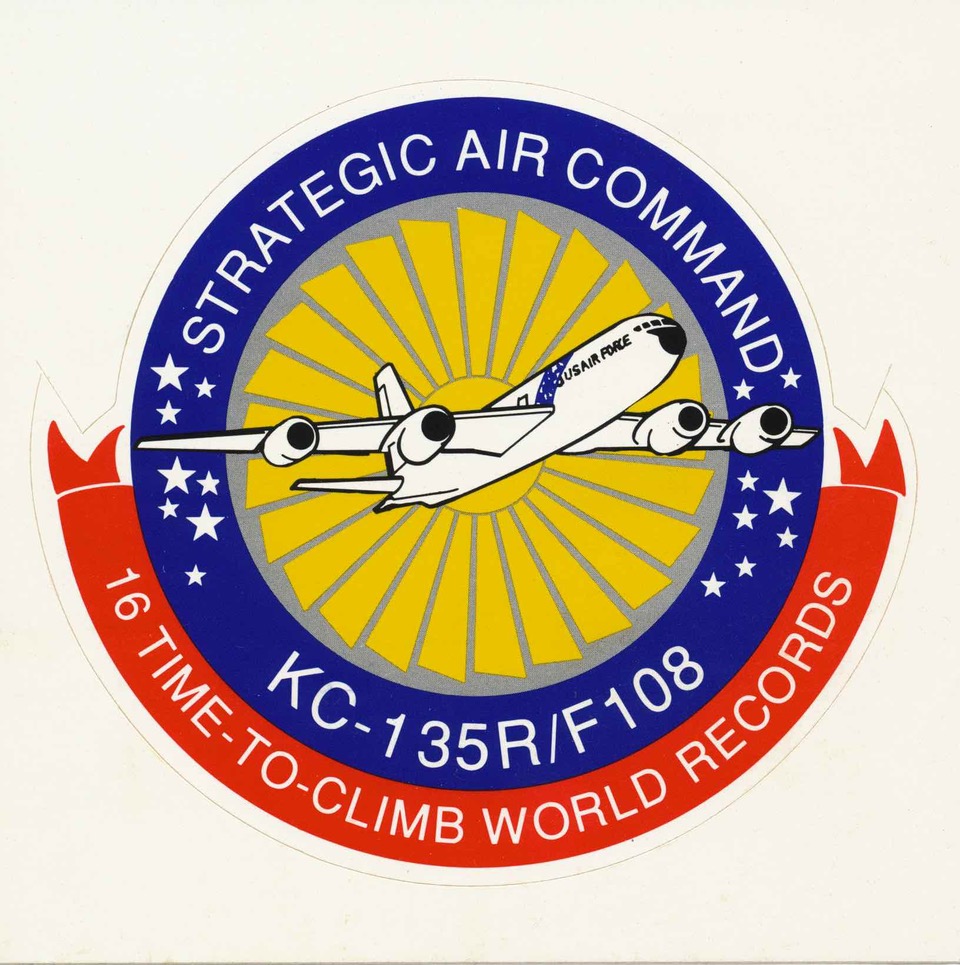
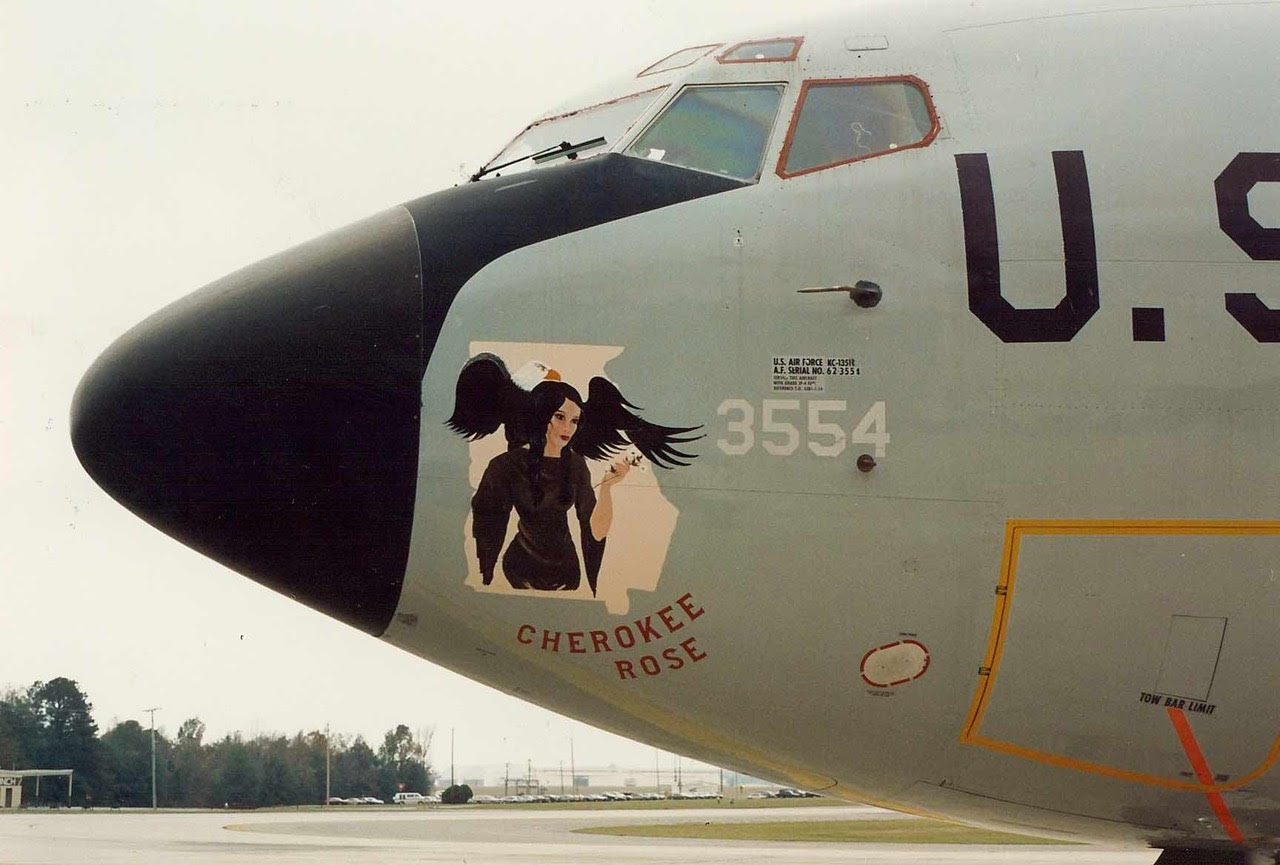
With these thoughts in mind, “Mad Jack” and crew carefully planned their “takeoff to remember.” EC-135H 61-0291, named Anglian Lion, was chosen for the flight. Given that the airplane would carry only a minimal fuel load for the display, it was nearly 100,000 pounds lighter than its maximum takeoff weight, substantially improving its performance. Moreover, the crew planned to delay rotation from the calculated point on the runway to increase the airplane’s speed at takeoff. Tire placard speed—the maximum speed the tires can tolerate on the ground—is 198 KIAS, so the actual rotation point was carefully calculated to be less than this speed and with sufficient runway remaining to ensure becoming airborne safely. The aircraft would rotate to whatever nose-up attitude would allow the airplane to climb to approximately 1,500 ft before leveling off with a safety margin of 3-engine climb speed plus 50 KIAS in case of an engine failure after decision speed.

The actual takeoff went as planned, although the steep angle led to decreased airflow through the engines, causing a noticeable compressor stall on the #4 engine. The crew chief, who was in the boom pod during takeoff, thought the airplane “went vertical!” The 7th Air Division commander, Brigadier General Kenneth L. Hagemann, who was unaware of the carefully planned start of the show, joked “there goes my career.”
In any event, the takeoff certainly impressed the crowd!
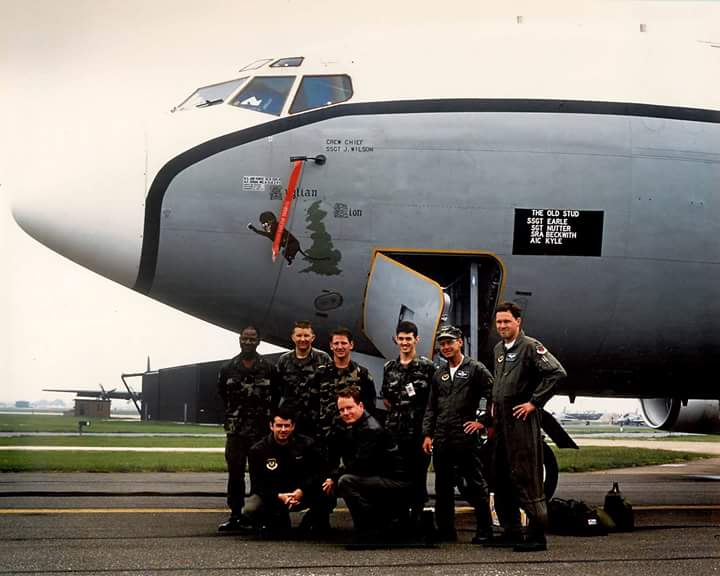
In today’s far more conservative Air Force, surely there are critics who would say this was unsafe for a big airplane like the EC-135, while citing the Thunderhawks KC-135 crash and the loss of the B-52 at Fairchild. Those are accidents from unrelated causes and are better left for another post. In the case of the Anglian Lion, however, this definitely non-standard takeoff was carefully calculated using official takeoff data and was well within the jet’s operational limits.
Flame it if you will, but as the legendary “Tex” Johnston—who rolled the Boeing 367-80, twice, might say, “it was a helluva performance!”
Robert S Hopkins, III, is an independent scholar and aviation historian. Previously he was a US Air Force pilot and flew 17 different variants of EC-, KC-, and RC-135s. He has appeared on a variety of aviation programs on the BBC, Smithsonian, Discovery, NRK (Norway), and the History Channel. Hopkins earned a PhD in History from the University of Virginia and has published multiple books on the history of strategic airpower and aerial reconnaissance.
